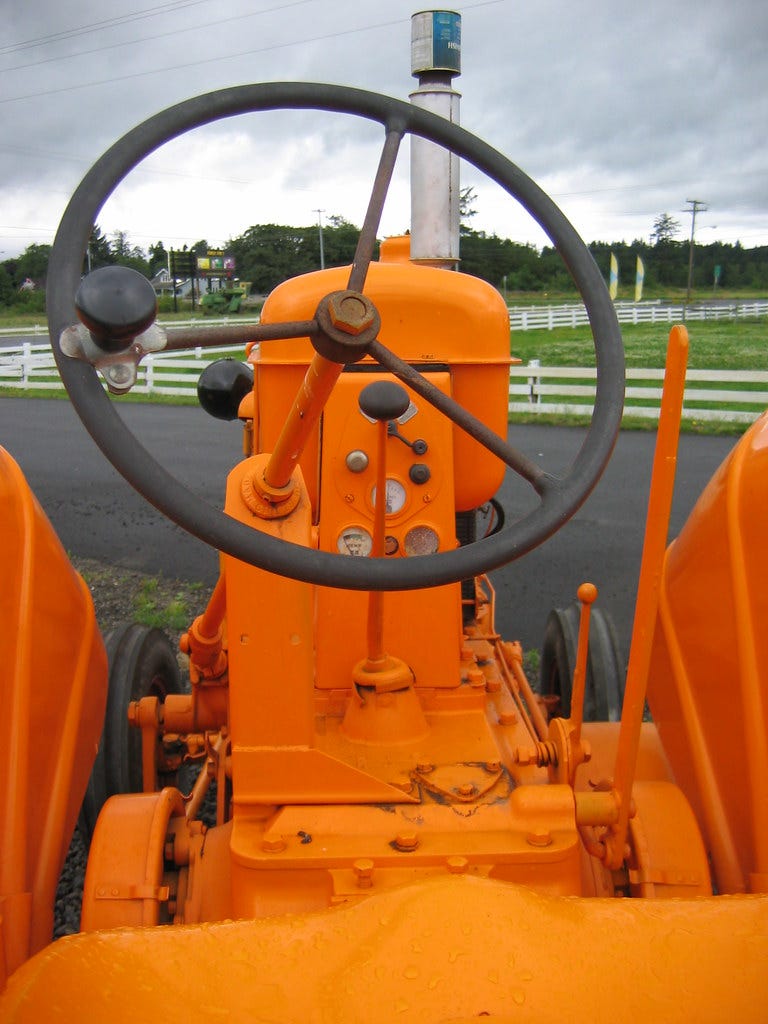In grad school, I learned to drive a tractor. It was an orange tractor, a few decades old, with Willie Nelson’s autograph on the side in black Sharpie. I guess Willie had visited the farm – which was the University of Montana’s demonstration farm – and left his mark.
Anyhow, I was scared of the tractor, of me operating the tractor, of me humiliating myself while operating the tractor. But my farming teacher (when you study Environmental Studies, you have things like farming teachers) was a lovely human named Tim who was both dreamy and wise. He showed me how the tractor worked, told me to move some manure with it, and walked away. Did I stall it out? Yes. Did I drive too fast? Yes. But did I learn how to drive it, without humiliation? Yes I did. And I walked away from the farm that day with a sense of pride in my own capabilities.
Benign neglect
My mom likes to talk about the idea of benign neglect, that way that children benefit from being ignored and left to their own devices. She is a fan of a fenced backyard with a window over the kitchen sink a parent could glance out of occasionally, unobtrusively. I remember many happy hours as a child, playing and creating without the sense of being observed. I know that when someone breathes over me, ready to help at any moment, I feel horribly anxious. I feel judged. My creativity disengages and I become merely their remote controlled arms. I’m no longer interested in solving problems, just in doing it right. Failure becomes humiliation.
I’d go so far as to say, sometimes the worst teachers are the best teachers. For instance, my first pottery teacher. The class was a late-night class at the Seward Park Clay Studio in Seattle, and many of the students had been taking the class for years, using it as access to the kiln and wheels more than as instruction. The teacher spent class showing us videos of master Japanese potters, shooting the shit, and drinking wine, maybe throwing a bowl or two. If I had a question about the actual specifics of pottery, other students helped me out. I didn’t learn how to wedge or center in that class, but I was free to feel my way into a new skill on my own terms, without judgment or any hovering eye. I sank into the feeling of clay moving under my hands, without many rules in my head about how it should be. I got extremely messy. I threw bowls that pleased me and that in their thickness have been excellent toddler bowls, and I went on to pursue pottery for several more years before parenting focused my creative pursuits.
Getting out of the way
Sometimes, the most challenging piece of teaching is the getting out of the way. Here’s where the large class size of public schools may be accidentally beneficial. But in my class, there can be stretches of time where no one needs any help. If I hover, I only disrupt them. If I hover, they write just to please me. And if I hover, they use me as their personal dictionary instead of puzzling out the words themselves. So I’ve learned to stare out the window, sharpen pencils, read a poem – to be there if they need me, but to look away. It’s a little bit like the way you don’t stare at wild animals if you want them to stick around. Creative exploration comes from the wild inside us. It needs space and an oblique, chill approach. So I give the kids instructions, show them the throttle and the brake, flash them a smile, and walk away.





I love this B. My Mom was definitely a benign neglecter - sometimes just neglectful. On balance I am deeply grateful for the sense of resilience I am almost always able to tap into. I really appreciate your reflections about your Mom.
Thanks Catherine! And so nice to see you briefly at Jubilee.